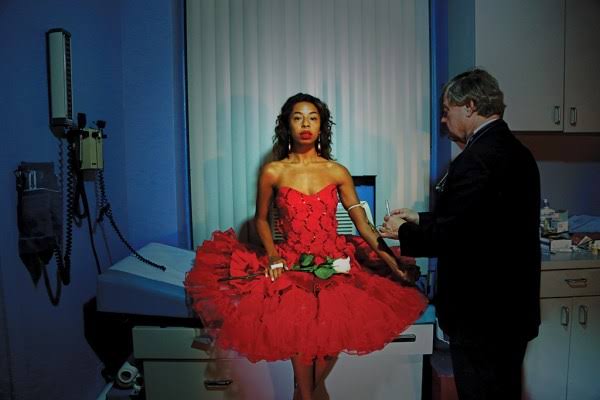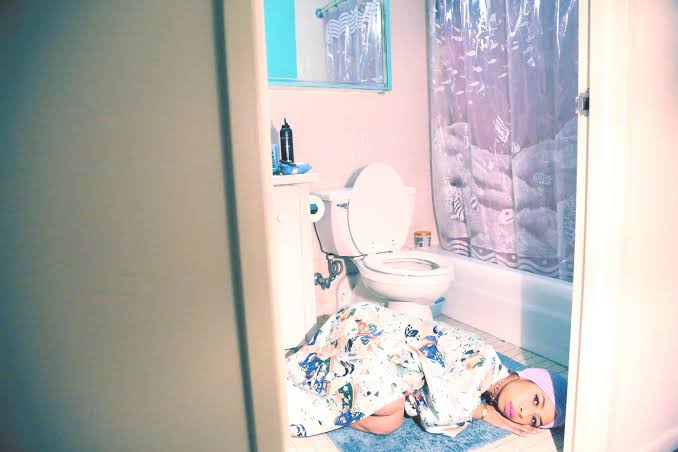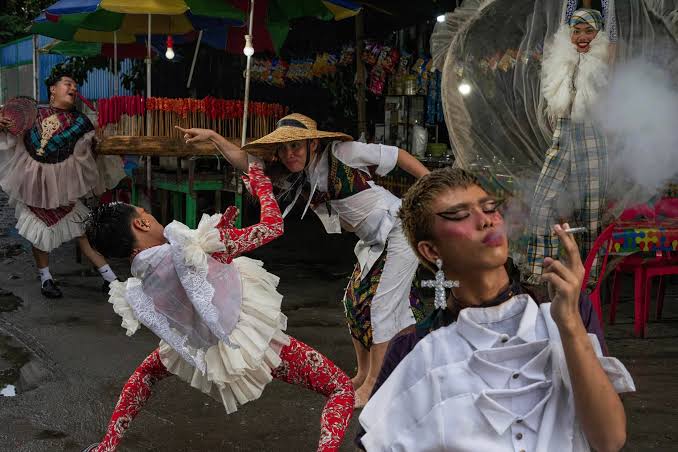Glamor has long been a gilded thing: polished, pristine, locked behind velvet ropes, and reserved only for those adorned in privilege. Yet, in the humid streets of Manila, a sari-sari store owner adjusts her pearls as she steps out in pressed trousers, a grandmother fastens an embroidered veil before Sunday mass, and a young boy races through the alleyways, his sequined sando catching the light as he runs. Filipino artists like Lee Morale and Kia LaBeija slip through these barriers, unravelling its exclusivity, tugging it down from its pedestal, and weaving it into the fabric of the everyday—where it has always belonged.
In Gloss With A Purpose, an exhibit curated by Hannah Jaugan (4 AB AM), Morale and LaBeija’s works gleam purposefully, upending rigid notions of beauty, identity, and performance. Here, glamor is no longer a spectacle reserved for the few—it becomes a language of defiance, a force of selfhood, and a reclamation of space. Jaugan, a graduating Art Management student from Ateneo de Manila University, approaches glamor from both an unexpected and deeply reflective lens in her senior thesis exhibit, held from March 7 to 9, 2025, at Kalawakan Spacetime, Quezon City.
Jaugan’s journey began with the discovery of LaBeija through the Visual Acquired Immunodeficiency Syndrome (AIDS) registry—a space that archives the works of artists living with or lost to Human Immunodeficiency Virus (HIV) and AIDS. What captivated the senior was not just LaBeija’s story, but how she rejected the fear-laden imagery that often defines AIDS narratives. Rather than leaning into stark portrayals of suffering, LaBeija turned to grandeur, as her works embrace ballroom aesthetics, self-portraiture, and theatrical splendor—art forms that have long served as sanctuaries for marginalized communities. By adorning her body in extravagance, LaBeija challenges the gaze that seeks to diminish her, asserting that those living with HIV are not mere symbols of tragedy, but vibrant, self-determined individuals.
In Eleven (2015) and Mourning Sickness (2014), LaBeija transforms personal history into art, using glamor to assert presence and defy expectations. Eleven captures her draped in a billowing ball gown—an image made all the more poignant by the fact that doctors once told her she wouldn’t live to attend prom.

Meanwhile, Mourning Sickness shifts towards intimacy and grief, conveying loss without surrendering to despair. Far from mere photographs, these works reject victimhood, reclaiming space for dignity, agency, and the nuanced reality of living with HIV.

This radical reimagining of glamor is what shaped Gloss With A Purpose. Inspired by LaBeija, Jaugan sought to expand this conversation within the Philippine context. Her exhibit explores the blurred boundaries between artifice and truth in performative spaces, noting how glamor is often confined to Hollywood and high fashion, yet artists like Morale root it in everyday Filipino life. “You think, ‘Oh wait, I do see people in the streets dressing up to the nines,’” Jaugan reflects, highlighting how glamor is not just aspirational—it is already woven into the culture.
For Morale, a queer artist from Sultan Kudarat, glamor is inseparable from identity. Their works seek to center queer narratives within the Filipino cultural landscape—stories often overshadowed or erased. Morale’s photography and creative direction transform the mundane into the magnificent, capturing the richness of queer existence beyond Westernized ideals. Their works challenge colonial aesthetics and mainstream creative industries that overlook Filipino settings. By favoring Eurocentric ideals, the industry perpetuates a colonial mindset—one that diminishes the beauty of local culture. However, Morale argues: “There is beauty in our streets, in our cities, in our daily lives. We must reclaim that power.”
Morale’s Sayaw Mga Choy exemplifies this vision, capturing the intersection of queer identity, working-class life, and the uninhibited joy of movement. Drawing inspiration from budots—a grassroots electronic dance phenomenon embraced by communities across the Philippines—the piece celebrates self-expression outside rigid, Westernized notions of glamor. The image pulsates with the raw energy of everyday revelry: young figures in brightly colored clothing while dancing, their movements blurring against the backdrop of a street alive with the colors of its surroundings. In depicting the beauty of queer joy, Morale reinforces that glamor is not exclusive to high fashion or luxury; rather, it thrives in the unfiltered exuberance of the masses.

This redefinition of glamor—as something not found in exclusivity, but in the everyday acts of self-expression—lies at the heart of Morale’s work. For them, glamor in Filipino queer life is not about hiding one’s identity, but about revealing one’s most authentic self. Morale rejects the notion that glamor is merely for the privileged, arguing instead that it is a language of resistance. Their work positions everyday Filipino settings—churches, tricycles, bustling streets—as stages for self-expression, proving that glamor exists everywhere and belongs to everyone.
Through these conversations, Jaugan grasped that glamor is an equalizer. It is an artistic tool that allows people to transcend social barriers and build identities beyond the aesthetics imposed upon them. “Glamor is artificial in the best sense,” she states, arguing that its very artifice is what makes it democratic, allowing individuals to construct their own identity regardless of societal constraints.
In a world that dictates who is worthy of being seen, Jaugan, Morale, and LaBeija remind us that glamor is not granted—it is claimed. Whether in a sequined gown or a simple woven camisa, its power lies not in luxury but in the act of dressing with intention, of reclaiming the gaze. More than adornment, glamor is agency: a mirror held up to those long overlooked, demanding they be seen. It is woven into the everyday and stitched into the fabric of lived experience, just as it has always been. Through spectacle and sincerity, defiance and grace, these artists prove that glamor belongs not just to the privileged few, but to all those who embrace it.
Shine Cabantog is a second-year student pursuing a Bachelor of Fine Arts in Information Design at the Ateneo de Manila University. Her interdisciplinary practice engages with visual art and design, with particular interest in the intersections of form, narrative, and communication. She is currently participating in a book design exhibit at the 2F Areté Innovation Wing, developed as part of her coursework in typography.
Her works are available on Instagram at @foundobjects.png.
We are calling for contributions for the next set of articles to be featured right in our next folio. Come and submit your works today!